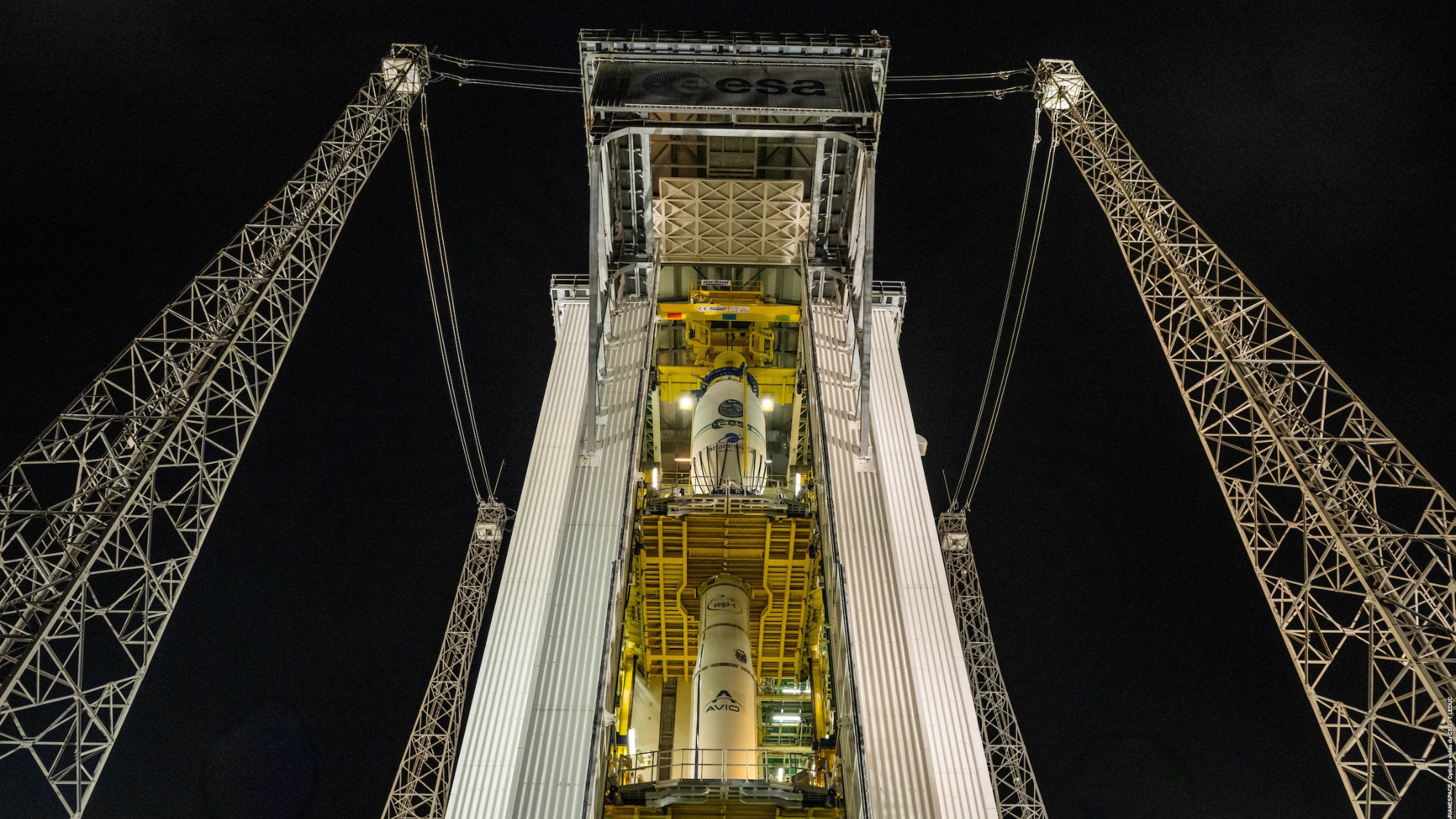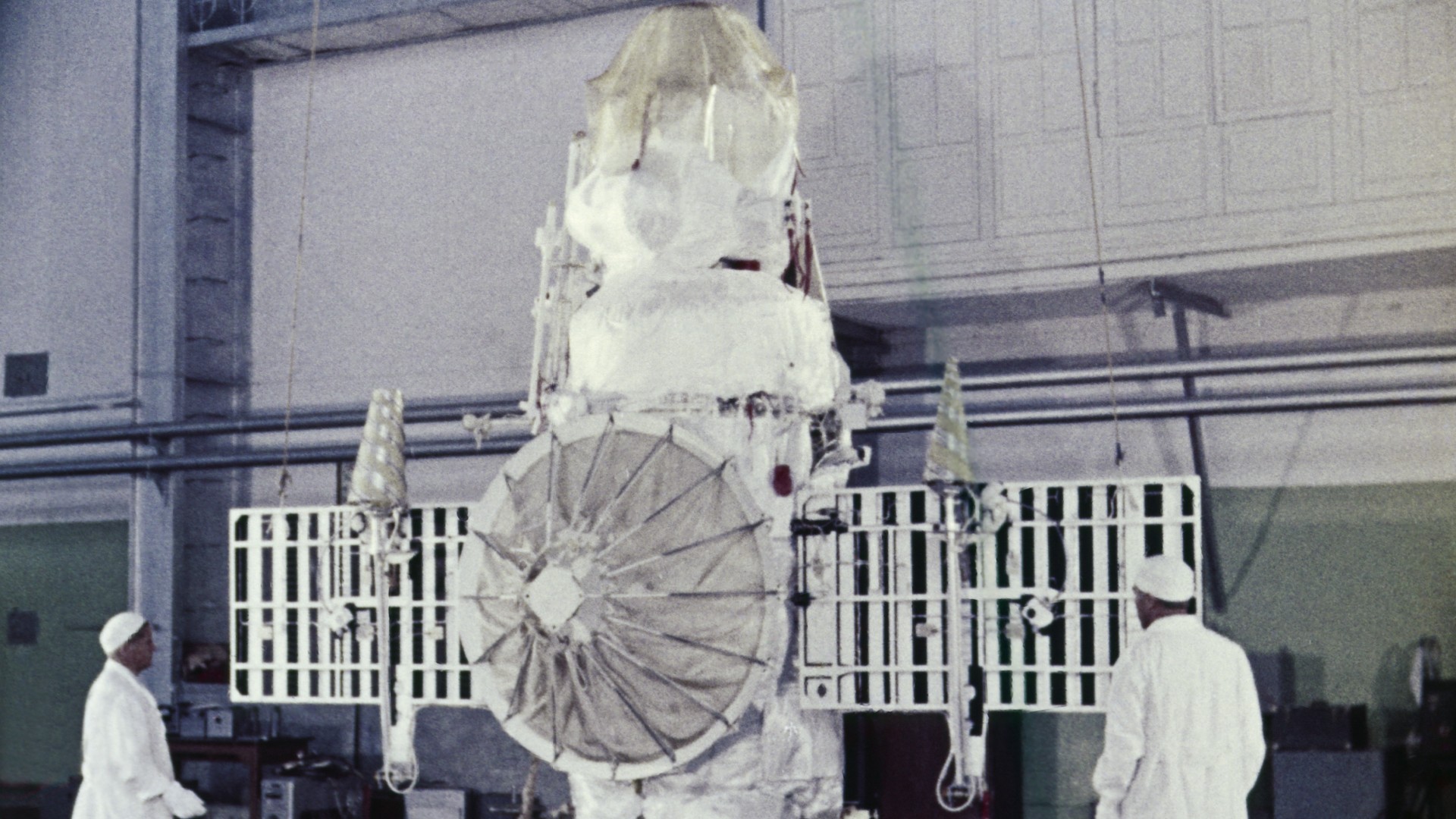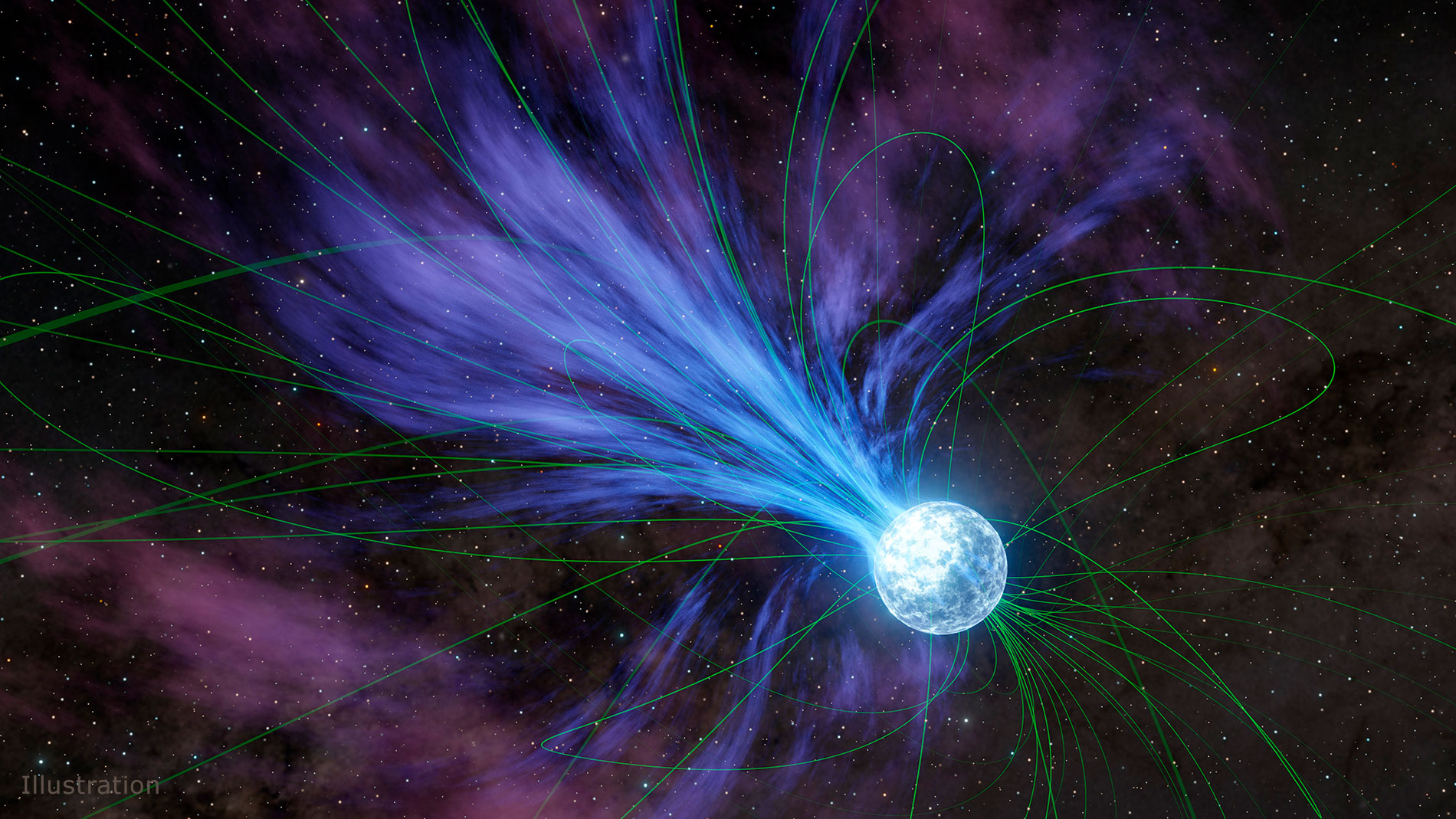Image of the Day: December 2011
Down Argentine Way
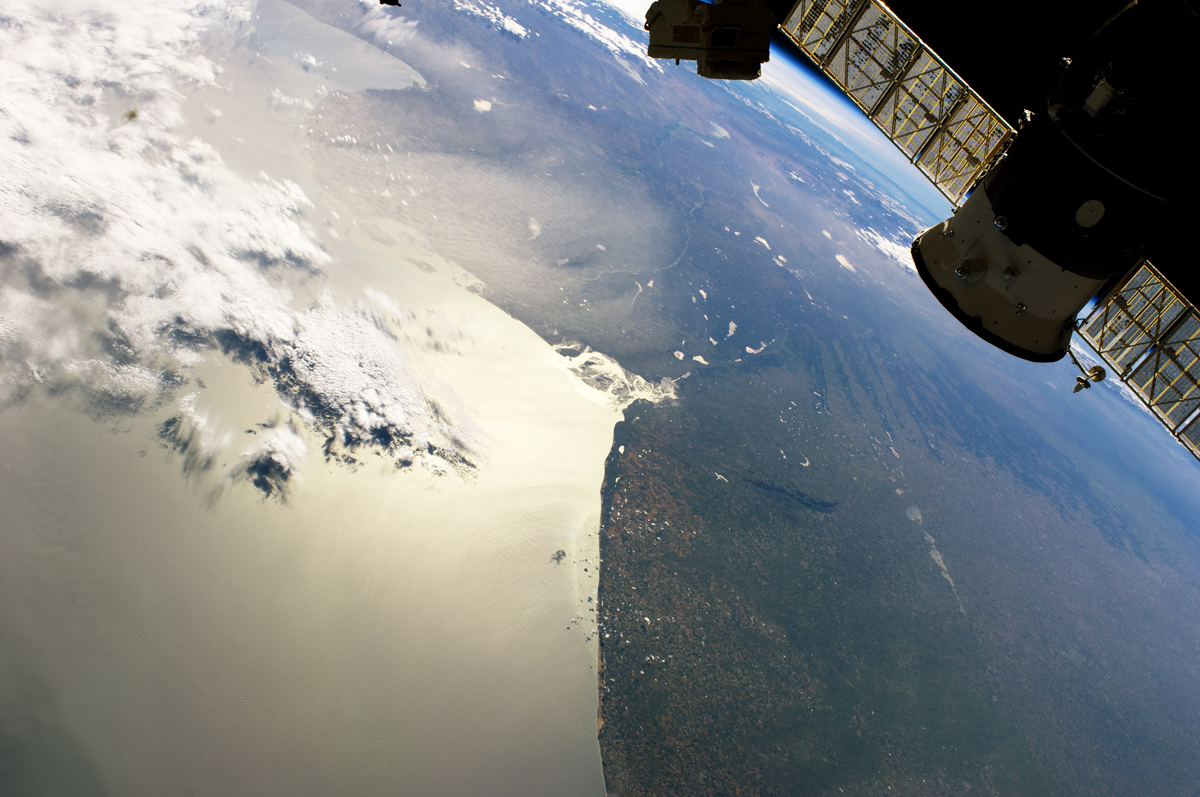
Thursday, December 15, 2011: A large plume of dust blows across Argentina in this astronaut photo taken on the International Space Station, November 22, 2011. The city of Bahia Blanca lies at the center (at the angle in the coastline), with the dust plume visible as the brownish-gray area directly above. Sun glint on the Atlantic Ocean and clouds highlight the left side of the image. A docked Russian Progress spacecraft hangs in the foreground at upper right. Northwestern and central Argentina frequently experience dust storms. Dry westerlies blowing down from the Andes Mountains produce sudden and extensive clouds of fine soil. The strong winds are called the pampero sucio.
— Tom Chao
It's Very Clear
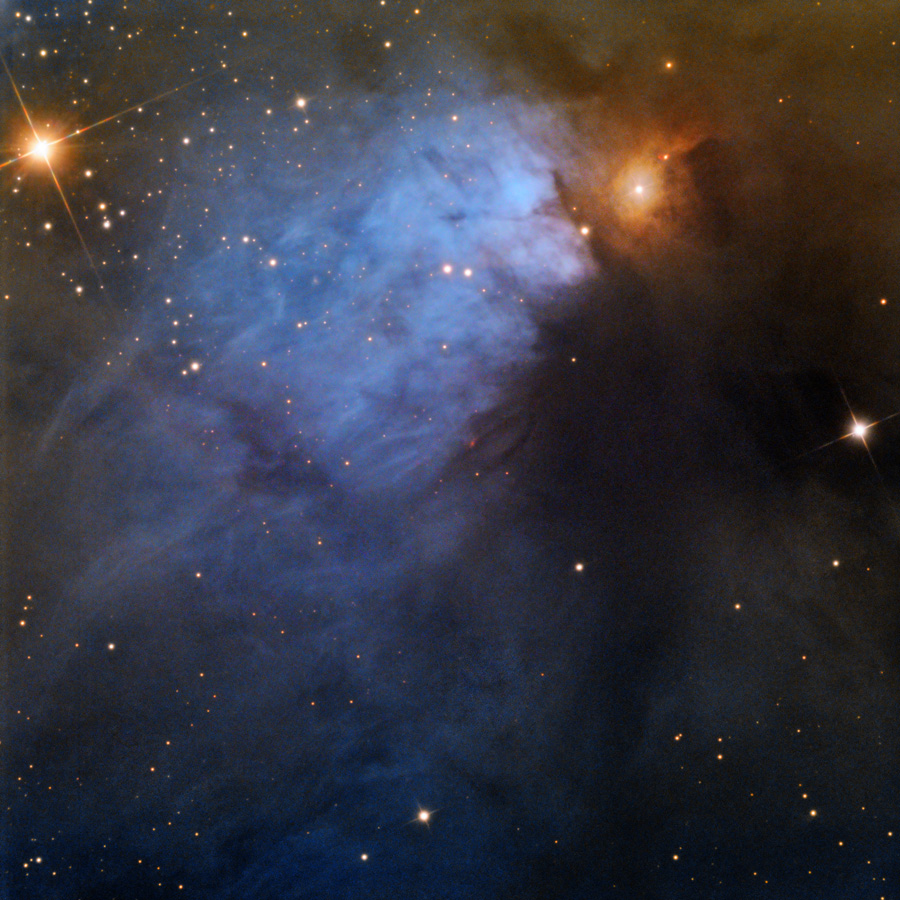
Friday, December 16, 2011: An extremely dim nebula called Cederblad 30 glows in a new photo taken during an "Astrophotography with Adam Block" program on November 25, 2011, at Mt. Lemmon SkyCenter in Arizona. The nebula looks like a small bluish fan coming out of a larger cloud of dust. This nebula often appears in widefield images of the dusty clouds towards the constellation of Taurus. However, through the Schulman Telescope and using a very sensitive STX (SBIG) 16803 camera the nebula comes into its own. Few current published images show this nebula at this resolution.
— Tom Chao
Jerkin' Back 'n' Forth
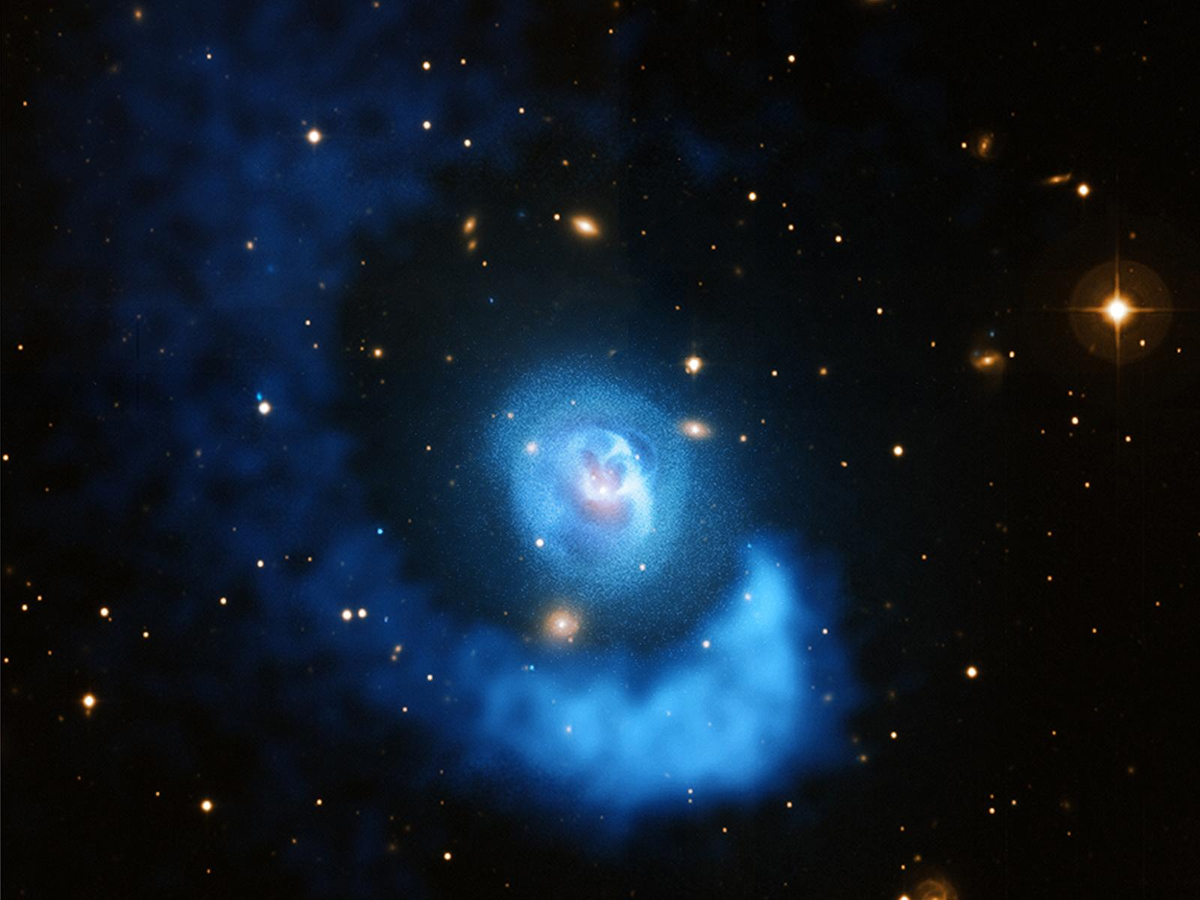
Monday, December 19, 2011: Like wine in a glass, vast clouds of hot gas are "sloshing" back and forth in Abell 2052, a galaxy cluster located about 480 million light years from Earth. X-ray data (blue) shows hot gas, and optical data (gold) shows galaxies. A spiral structure in the hot gas spans almost a million light years around the outside of the image, surrounding a giant elliptical galaxy at the center. This spiral formed when a small cluster of galaxies smashed into a larger one that surrounds the central elliptical galaxy. The smaller cluster passed the cluster core, the direction of motion of the cluster gas reversed and it traveled back towards the cluster center. The cluster gas moved through the center again and oscillated back and forth, similar to wine sloshing in a glass jerked sideways. The spiral pattern appeared because the two clusters collided off-center.
— Tom Chao
On the Border
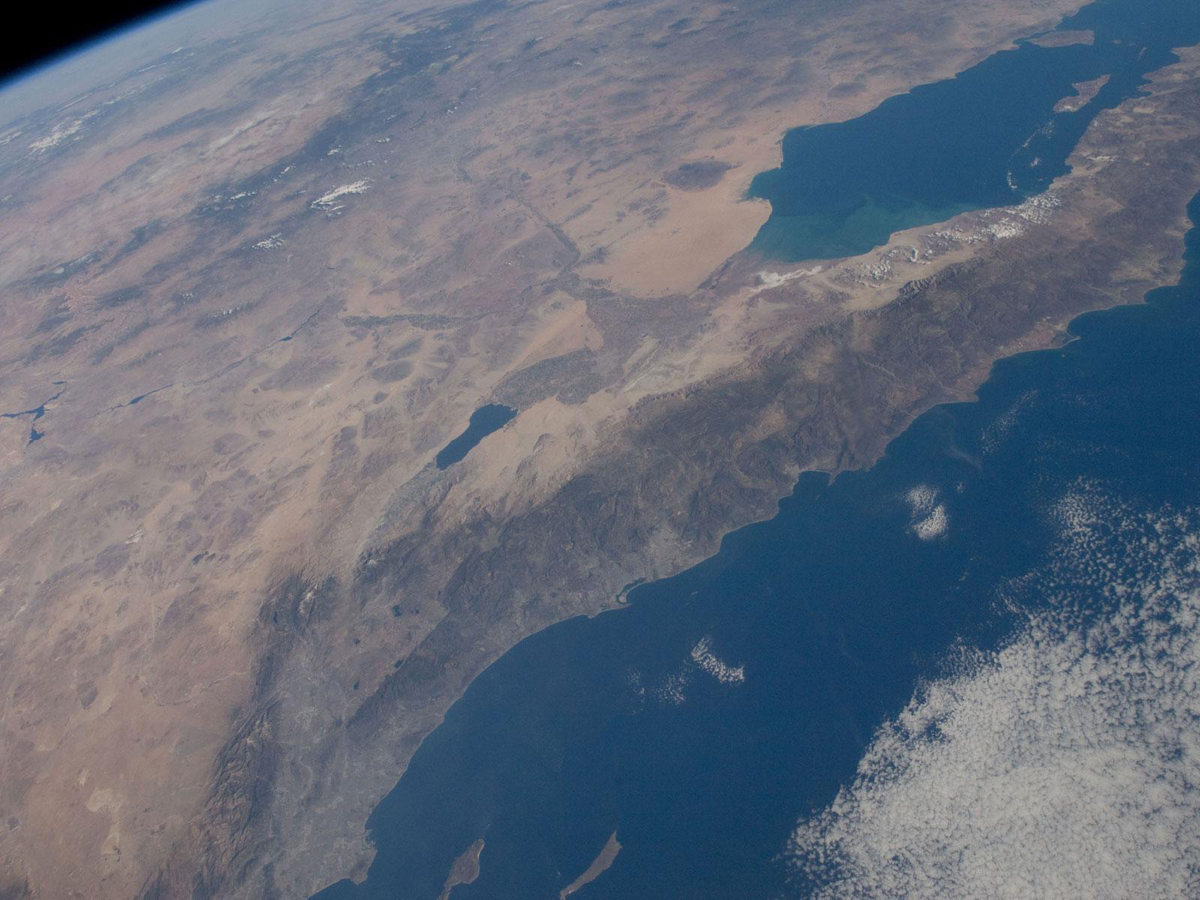
Tuesday, December 20, 2011: Expedition 29 crew members aboard the International Space Station took this photograph of parts of the United States and Mexico, as it flew above the Pacific Ocean on Nov. 16, 2011. The Salton Sea is in the center of the frame, with the Gulf of Cortez, Mexico's Baja California and the Colorado River in the upper right quadrant. Los Angeles and Santa Catalina and San Clemente islands are seen on the bottom center edge of the image. Lake Mead and the Las Vegas area of Nevada even made it into the frame in the upper left quadrant.
— Tom Chao
It's Amazing the Stuff You See When You Finally Shed that Shroud
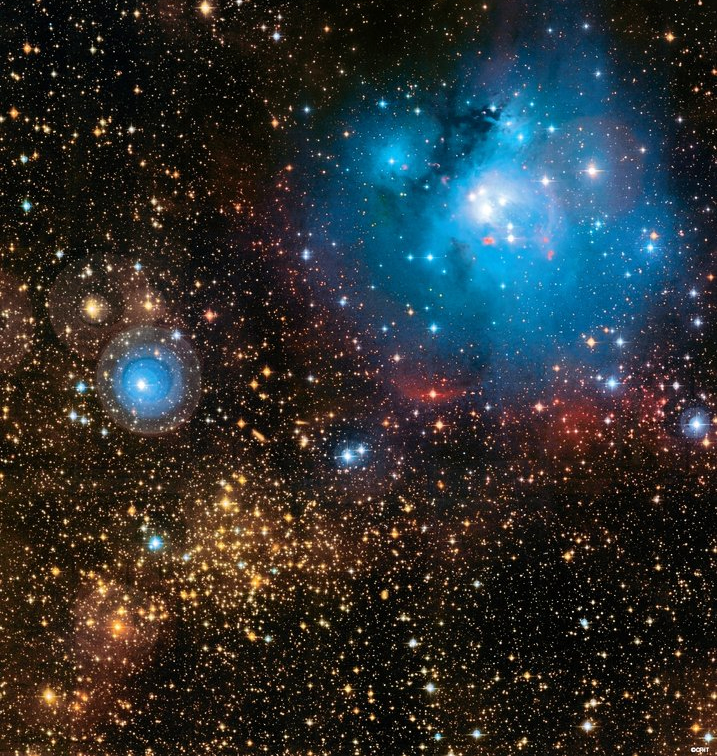
Wednesday, December 21, 2011: Young massive bright blue stars illuminate the ambient molecular gas of NGC 7129 (top right), a spent star formation region. The star cluster NGC 7132 (lower left) has existed far longer, and already freed itself from a nascent shroud of gas.
— Tom Chao
Last Chicken in the Curiosity Shop
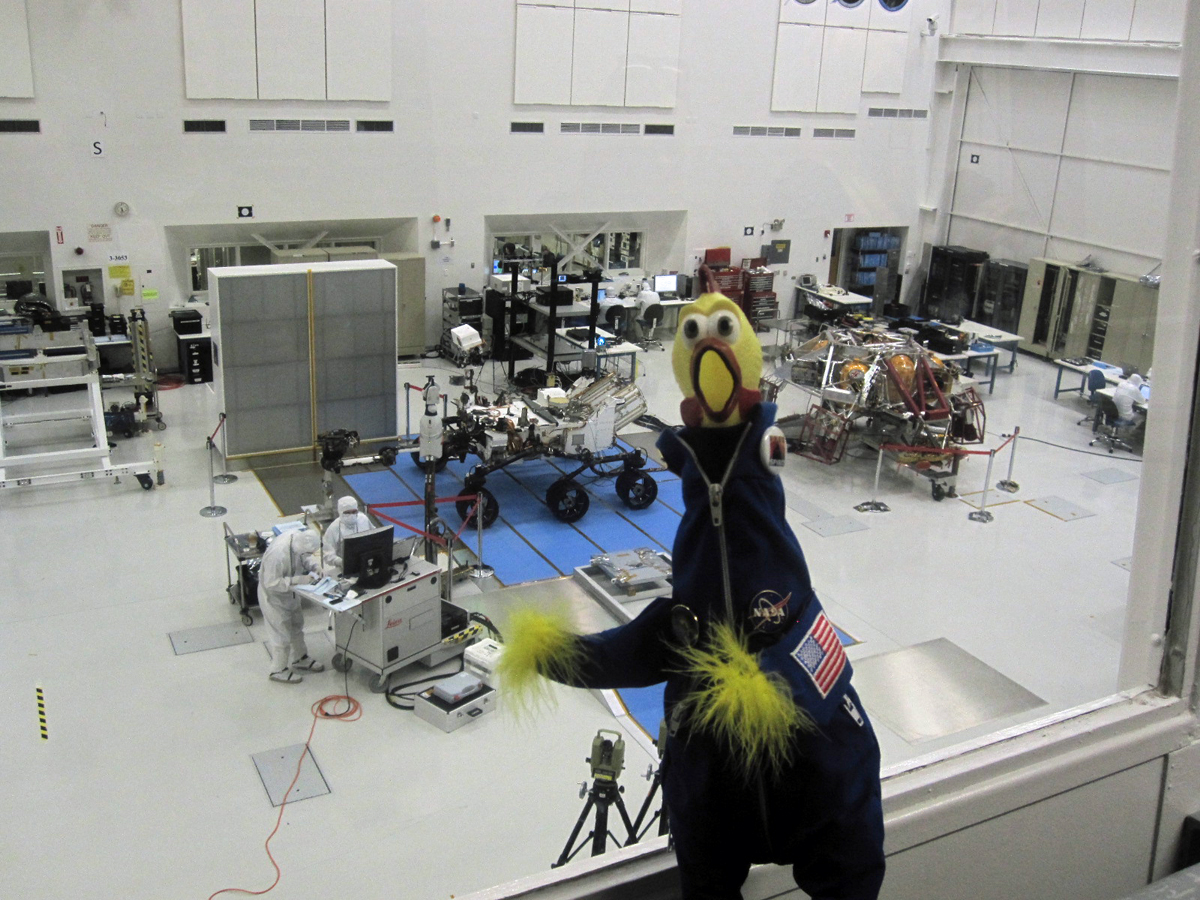
Thursday, December 22, 2011: @Pillownaut tweeted: "Ah, memories. @Camilla_SDO taught us all about @MarsCuriosity at JPL before packing up for transport to KSC! :D" Also, she mentioned: "This picture was part of the Jet Propulsion Laboratory Tweetup in southern California this past June. That particular shot above the clean room was the last time we were able to view Curiosity publicly before she was packed up for travel to Cape Canaveral and prepped for launch. Believe it or not, the person balancing her for that picture was Abe Benrubi of E.R. fame."
— Tom Chao
Season's Greetings From the South Pole
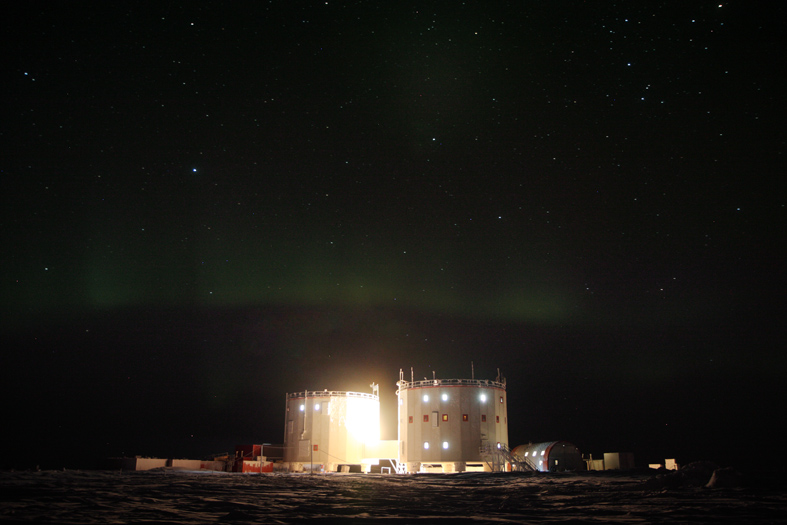
Friday, December 23, 2011: The white domes of the Concordia station photographed at night with aurora australis, southern lights in the sky in a scene worthy of the best season's greetings card.
It is summer in Antarctica and the new crew for the Concordia research station will soon arrive. And since the place is second only to space for harsh conditions, they have been trained courtesy of the European Space Agency.
The Franco–Italian operated Concordia research base in Antarctica is a place of extremes, especially during the long, dark winter.
Now, during the summer, it is around minus 30 degrees Celsius and the Sun shines around the clock, but Antarctica will gradually show its other face starting from February, when temperatures will drop to minus 80 degrees C. — SPACE.com Staff
Get the Space.com Newsletter
Breaking space news, the latest updates on rocket launches, skywatching events and more!
A Sunset Double Green Flash
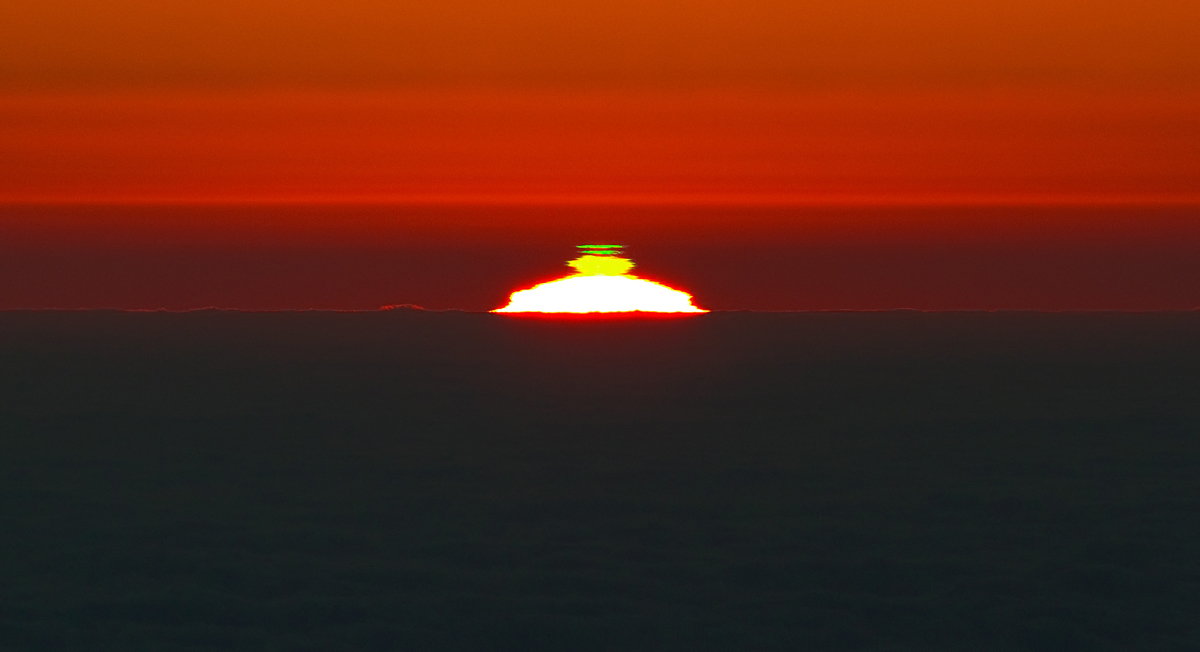
Monday, December 26, 2011: At sunset, the sky is often painted with an array of oranges, reds and yellows, and even some shades of pink. But there are occasions when a green flash appears above the solar disc for a second or so. One such occurrence was captured beautifully in this picture taken from Cerro Paranal, a 2600-metre-high mountain in the Chilean Atacama Desert, by ESO Photo Ambassador Gianluca Lombardi on March 28 and released recently. Cerro Paranal is home to ESO’s Very Large Telescope.
The green flash is a rather rare phenomenon; seeing such a transient event requires an unobstructed view of the setting (or rising) Sun and a very stable atmosphere. At Paranal the atmospheric conditions are just right for this, making the green flash a relatively common sight. But a double green flash such as this one is noteworthy even for Paranal.
The green flash occurs because the Earth’s atmosphere works like a giant prism that bends and disperses the sunlight. This effect is particularly significant at sunrise and sunset when the solar rays go through more of the lower, denser layers of the atmosphere. Shorter wavelength blue and green light from the sun is bent more than longer wavelength orange and red, so it appears slightly higher in the sky than orange or red rays from the point of view of an observer.
When the sun is close to the horizon and conditions are just right, a mirage effect related to the temperature gradient in the atmosphere can magnify the dispersion — the separation of colors — and produce the elusive green flash. A blue flash is almost never seen as the blue light is scattered by molecules and particles in the dense blanket of air towards the horizon.
The mirage can also distort the shape of the Sun and that of the flash. We see two bands of green light in this image because the weather conditions created two alternating cold and warm layers of air in the atmosphere.
After Galaxies Collide
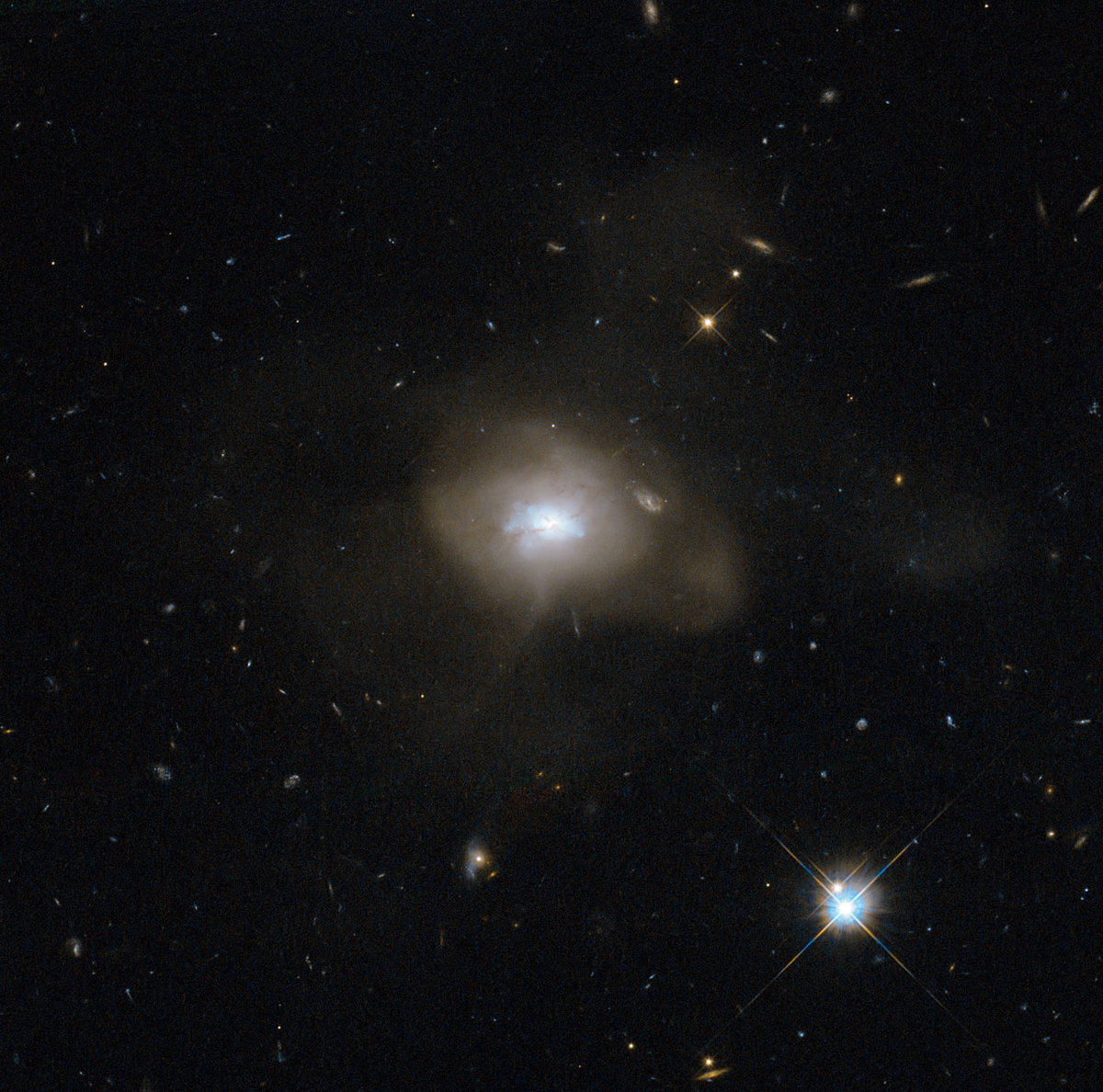
Tuesday, December 27, 2011: This diffuse-looking galaxy may be the only evidence remaining from an ancient collision between two galaxies. Known as SDSS J162702.56+432833.9, this object is technically catalogued as an elliptical galaxy, but it was likely created during the collision of two spiral galaxies, astronomers say.
This image was taken by the Hubble Space Telescope. Some ribbons of dust notably obscure parts of the conglomerated galaxy's central, bluish region. Those dust lanes could be remnants of the spiral arms of the recently departed galaxies.
— SPACE.com Staff
A Cosmic Horseshoe
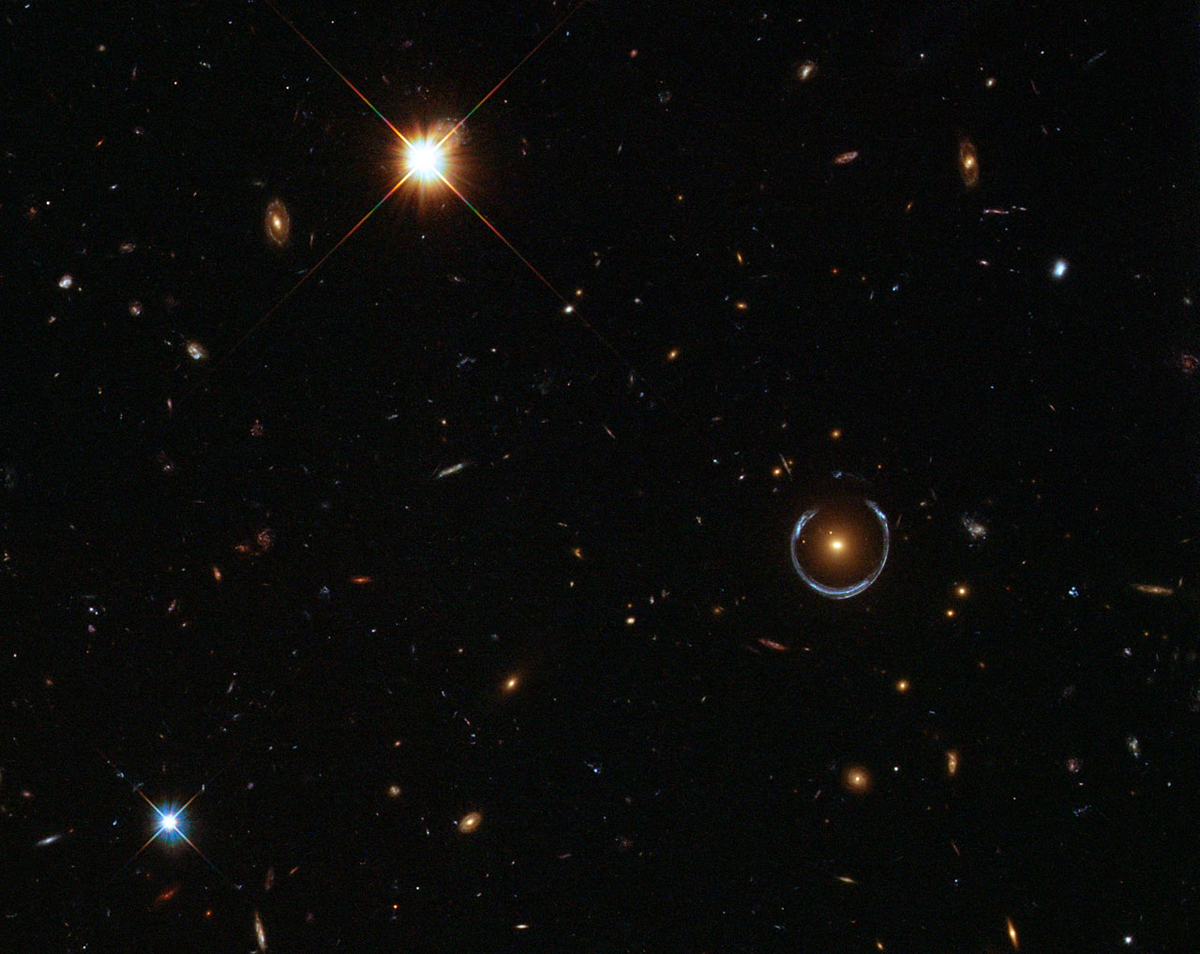
Wednesday, December 28, 2011: A fortuitous alignment of celestial mechanics has given the Hubble Space Telescope an amazing view of some distant galaxies. Here, one interesting red galaxy is encircled by a hazy blue horseshoe shape and contains about 10 times the mass of our Milky Way galaxy. But take another look.
It's actually the blue horsehoe shape that has astronomers talking about this photo. The horseshoe is actually a distant galaxy that has been magnified and warped into a nearly complete ring by the strong gravitational pull of the massive red galaxy in the foreground. To see such a so-called Einstein Ring required the fortunate alignment of the foreground and background galaxies, making this object’s nickname "the Cosmic Horseshoe" particularly apt, NASA says.
— SPACE.com Staff
Join our Space Forums to keep talking space on the latest missions, night sky and more! And if you have a news tip, correction or comment, let us know at: community@space.com.

Space.com is the premier source of space exploration, innovation and astronomy news, chronicling (and celebrating) humanity's ongoing expansion across the final frontier. Originally founded in 1999, Space.com is, and always has been, the passion of writers and editors who are space fans and also trained journalists. Our current news team consists of Editor-in-Chief Tariq Malik; Editor Hanneke Weitering, Senior Space Writer Mike Wall; Senior Writer Meghan Bartels; Senior Writer Chelsea Gohd, Senior Writer Tereza Pultarova and Staff Writer Alexander Cox, focusing on e-commerce. Senior Producer Steve Spaleta oversees our space videos, with Diana Whitcroft as our Social Media Editor.
